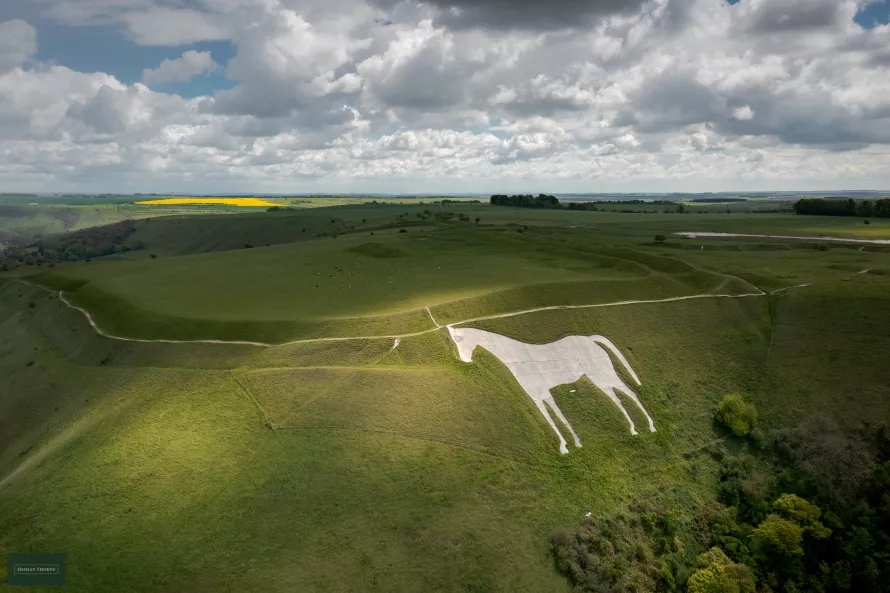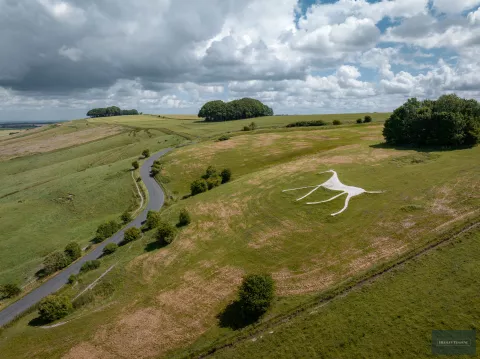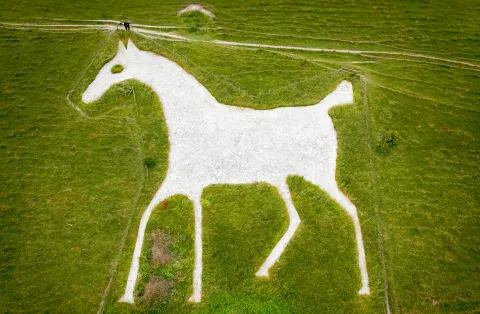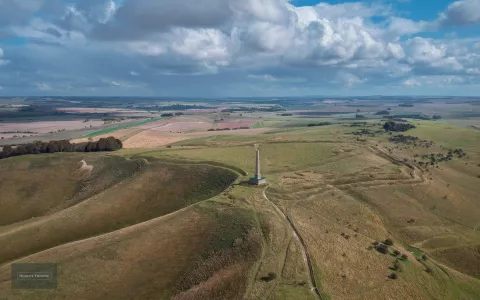The other horses
At present 16 horse geoglyphs survive in the UK, plus a small painted figure on Cleaden Hill, near South Shields. The majority of them cluster on the Wiltshire chalk, such as Alton Barnes, Cherhill and Westbury. The impressive Westbury Horse has recently been restored by the National Trust. The figure visible today, created in 1778 is a stolid, unmoving beast. It overlies an earlier image, however, there is no evidence at present for any great antiquity.
The Uffington White Horse seems to have been the inspiration for the rest. Many date to the Hanoverian period, when George III was both popular and associated with white horses. In this period the Uffington scourings were great events and may have inspired imitation amongst the landed gentry. At Osmington, Dorset, an enormous horse cut in 1808 had a rider – King George III himself. The white horses celebrated patriotism and land ownership.
Later events also inspired new horses, like Queen Victoria’s coronation and more recently the Millennium. The modern image of a horse at Folkestone, Kent, is visible to travellers from the Continent as they emerge from the Channel Tunnel. Its foaling was planned for the Millennium but typically British disagreements and planning appeals delayed its appearance until 2003. This elegant figure is made of chalk slabs pinned to the ground by Gurkha soldiers.
Unfortunately a massive white horse statue – a possible rival to Anthony Gormley’s Angel of the North - was aborted by rising costs. This would have stood near Ebbsfleet Station in Kent where the Continental Rail Link first stopped in Britain. But that too has now been abandoned.
The archaeological investigations at Uffington have encouraged further work on hill-figures of potential antiquity. Not only horses, but others like the priapic giant of Cerne Abbas (Dorset) and the skinny human figure, the Long Man of Wilmington.




